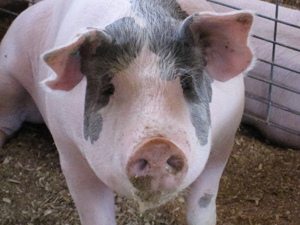There are several issues that arise when animals are used in dissection. The procurement, treatment, and euthanasia of animals are all areas to consider when upholding animal welfare. Here I will touch on procurement, or the obtaining of animals for educational use:
Procurement
- Supermarkets and Slaughterhouses: Some animals or their organs can be
purchased directly from supermarkets or slaughterhouses by schools for dissection. These include squid or mussels from supermarkets and fetal pigs or cows hearts from slaughterhouses as the by-products of the meat industry. Animals obtained from these sources will have been subject to several welfare issues that all animals raised for human consumption encounter. These issues range from poor handling on farms, painful medical procedures, overcrowding, and problems with systematic slaughter.
- Animal Shelters: Dogs and cats slated for euthanasia due to health problems or overcrowding in shelters are also used in dissection. Many veterinarian colleges obtain animals in this way. The proper treatment of animals in shelters must always be upheld for this method of procurement to be high welfare.
- Biological Supply Companies: Companies such as Carolina Biological Supply Company or WARD’s of Canada Limit offer the sale of preserved or live animals to educational institutions through catalogs and the internet. Information on the origin of these animals is somewhat lacking but both companies say on their websites that depending on species, animals are either obtained from shelters, slaughterhouses, the fishing and the fishing bait industry, man-made habitats, or are cultured specifically for them. http://www.carolina.com/ http://wardsci.com/
- The Wild: Animals that are harvested from the wild (spiny dogfish sharks, some frog species, etc.) are subject to population decimation, poor handling, long periods of transportation, and welfare issues associated with trapping or fishing.

